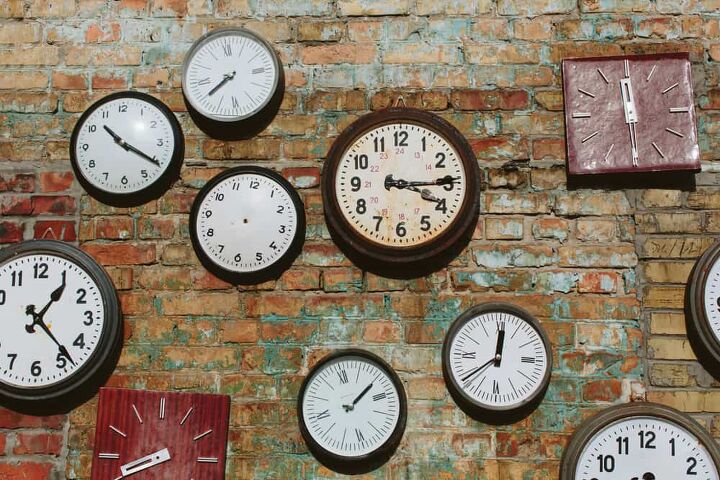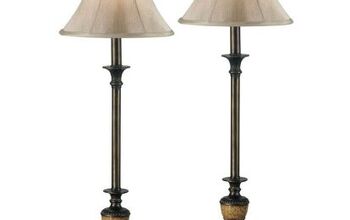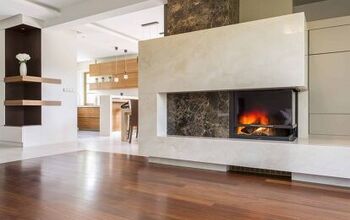26+ Different Types of Clocks (with Photos)

Did you know that there are many different types of clocks you choose from aside from a wall or digital clock? Clocks were one of the earliest human inventions. As technology developed, so did our clocks.
Depending on its design, each clock can tell the time differently. You’ll have clocks that display certain features and mechanisms, while others may be antique.
We’ve put together a list of clocks to consider if you’re searching for a new piece to add to your home or office.
How Do Clocks Tell Time?
For a clock to work, it needs to have a main power source. This could be battery-powered or a power line. To measure time, clocks use regular circular movement. The circular movements use a certain speed for the clock hands to move entirely around the clock. The hands (counter chains) are used to show the seconds, minutes, and hours. Keep in mind not all clocks have a second hand. The majority of clocks, the hands can show a time on the clock to be easily understood by all.
The most popular types of clocks are alarm, analog, pendulum, grandfather, mechanical, and digital clocks. Wall clocks and anniversary clocks are highly popular too.
Different Types of Clocks
1. Alarm
The alarm clock was designed to alert individuals at a specifically chosen time. Alarm clocks have the primary function of waking a person up from their nap or a night of sleep, as well as reminders for events or activities. Most alarm clocks use a specific sound, while others use both a sound and vibration. Some newer alarm clocks can even alert a person if they’re in a light sound of sleep.
To turn off the sound of your alarm clock, you would press a button that is normally located at the top location. Some alarm clocks will turn themselves off if left running too long, which can be a downfall for an individual who has trouble waking up and can sleep right through their alarm. Some newer versions of the alarm clock even had radio receivers that can set your radio to be the alarm instead of a specific sound.
2. Grandfather
If you are searching for a larger-sized clock with an old-style, the grandfather clock will be just what you’re looking for. Grandfather clocks are one of the largest clocks available who want something more traditional. With its pendulum mechanism locked at the tower of the clock, this clock is also freestanding.
Height-wise, the grandfather clock can stand up to two and a half meters tall and is found in many homes or mansions. The grandfather clock has a classic design that many people search for when wanting to enhance the appeal of their home. If you’re looking to purchase this clock, you may be able to hit up a deal at an antique or vintage shop. Your grandfather clock could last you up to fifteen years before developing any internal problems. You should have your internal parts oiled every five years or so to keep up on maintenance.
If you’re considering oiling the inside of the clock yourself, I would suggest you have the experts handle it. You don’t want to risk damaging your clock altogether. To oil the clock, you have to remove the dial and hands before even applying a single drop. The oil will minimize the amount of friction the clock has so this isn’t ideal for a DIY project.
3. Cuckoo
Cuckoo clocks are other traditional clocks that are sometimes found in homes. They are a fun way, especially for kids, to learn how to tell time since they have so many kid-like features. Rather than glancing at this clock to tell its time, you can listen to a cuckoo instead. Just like the name states, every time the clock will strike the hour, you can hear a cuckoo sound.
Another unique feature is the door of the cuckoo clock. The door will automatically open and the bird will appear. The mechanism that the cuckoo clock is that whenever the clock strikes the hour, the bird will pop out, and then go back inside the door. For example, if the time is 9 o’clock, the bird will pop in and out nine times. Some cuckoo clocks also allow you to turn the sound off, although what fun would that be?
The dials featured on the cuckoo clock are marked small with Roman numerals. This is a unique design that will surely catch the eye of your guests.
4. Outdoor
Outdoor clocks are popular among business owners. If you wanted to add appeal to the outside of your business, an outdoor clock would be a great choice. If you ever visit Europe, you will see many of these outdoor clocks outside businesses. Some outdoor clocks may not be as attractive as indoor ones, but they will still perform the job they are intended.
For homes, you can also hang outdoor clocks on your patio or in your yard for decor. Another interesting feature that outdoor clocks have is a humidity tracker and thermometer. Outdoor clocks are also obviously weatherproof. It can stand in various conditions without bothering the function of the clock.
5. Floor
Depending on their design, floor clocks can be very similar to grandfather clocks. They are larger and stand on their own. Floor locks, just as the name shows, rest on the floor. They are the second most popular floor clock, coming after the grandfather clock.
Some of the more modern designs of the floor clock look like tripods. The best feature that this clock has is that it can be moved anywhere and you can take it with you, as opposed to heavy grandfather clocks.
6. Mantel
A mantel clock is another name for a shelf clock. You’ll see mantel clocks located in many homes that have a fireplace. Homeowners love to place their mantel clocks right above. While these are popular on mantels, you can place them on any type of surface except for the floor or wall. These clocks are designing beautifully and have many works of art incorporated into their design. They are a gorgeous decorative piece to add to any room. You can operate this clock by battery or windup.
7. Carriage
Made in the 19th century, a carriage clock is small and spring-driven. This clock was mainly designed for traveling purposes. The case of a carriage clock is usually rectangular with a handle, and more often set with glass with porcelain panels. For timekeeping, carriage clocks use a balance and balance spring.
To correctly wind a carriage clock, you will press the key against the square arbor gently, and then keep turning it several times until you can feel resistance. Once you have done that, this will ensure that your clock will run for eight days. After you have finished winding the clock, you will notice the clock mechanism starts to tick. It is almost impossible to overwind a carriage clock, except if you have wound it too much and snapped the spring.
If you need to clean a carriage clock, all of the brass parts should be cleaned with a solution called Brasso, and then washed out with petrol. When drying, dry in sawdust and then chalk. If this seems like a tasking job for you, take it to an expert to be cleaned.
8. Anniversary
An anniversary clock is a mechanical clock that will keep time with a mechanism called a torsion pendulum. A torsion pendulum is a weight disk or hell. Sometimes the decorated wheel will have three or four chrome balls on its ornate spokes. Instead of it swinging like a regular pendulum, the torsion pendulum will rotate on a vertical axis.
Clocks that operate with a torsion pendulum are very delicate. You can see this mechanism exposed under a glass case or dome feature. These clocks were made in the late 1800s and were sometimes known as the 400-day clocks because they could operate for a full year with one single winding. Since this was the case sometimes they would not keep the correct timing for a full year. To keep the accurate time, it was best to wind these clocks once a month.
9. Wall
Wall clocks are the most common type of clock to keep in your home or office area. You can hang wall clocks just about in any area of your home for family and guests to quickly glance at the time. These clocks are also very easy to remove once hung up for when you need to change the time. Wall clocks come in all shapes, sizes, and designs and can be a great decorative addition.
10. Audio
To tell the time, audio clocks use a generated voice. They can also use auditory code to display the time instead of the voice option. Many audio clocks are used in church settings to announce the time or for people who are blind.
11. Tabletop
Tabletop clocks can be placed on any surface and are usually smaller than mantel clocks. They can get away with being more discreet. They are made with different materials, styles, and designs based on the kind of decor you have. If you want a more traditional style of table clock, you can opt for a wooden clock. For rustic, shoot for a table clock that looks similar to the one we have pictured here.
12. Projection
Projection clocks are a fancier type of clock. They are digital and include a projector that has an image magnified of the time on a screen. You can use projection clocks on either walls or ceilings. The numbers on the clock are very large and easy to read for those who have poor eyesight. They are ideal for those who struggle with seeing who may want to keep them in their living or bedrooms.
Projection clocks use battery-powered operations as their backup because the light of the projector only works if hooked up to electricity. You can also find portable projection clocks that are very similar to flashlights and don’t require other supplies.
13. Marine or Weather Station
Marine and weather station clocks make for a great gift for those who love to be out on the water. They allow you to monitor the weather, conditions, and even the humidity outside. Instead of buying all three clocks separately, you can buy them in one single consolidated device. Maritime clocks have a great look to them and aesthetically pleasing for those who love the look of unique clocks. These clocks are great in homes, offices, and boats.
The different types of clock mechanisms are pendulum, electric, atomic, mechanical, and quartz.
Types of Clock Mechanisms
1. Pendulum
First, you may be wondering what a pendulum exactly is if you haven’t heard it before. A pendulum is a type of rod that vertically hangs and swings from side to side by using gravity. The interesting thing about pendulums is that it always takes the same amount of time to complete a swing. To work, a pendulum works by converting its energy back and forth. When the pendulum is at its highest bob, it has maximum energy. As the pendulum swings down, it’s then converted over to kinetic energy.
For pendulum clocks to properly work, they must be stationary. If the clock is not stationary, it can affect the motion of the pendulum, which may cause the time to become inaccurate. The movements of a pendulum clock have five parts.
- Power Source: this could be a cord that pulls a mainspring.
- Pendulum: a weight rod that is the key feature to tell time.
- Gear train: the gear train will speed up the amount of power so the pendulum can use it. These gear trains will divide the rotation down to turn the hands on the clock.
- Escapement: the escapement will give the pendulum the signal to start swinging. This will then release the gear train that would move forward with each swing. This is the ticking sound you hear when a pendulum is swinging.
- Dial: the dial will record just how often the escapement is recorded. This will show how much time has passed.
2. Electric
An electric clock is operated by using electricity as opposed to other clocks we have discussed that use a mainspring. Electric clocks have a variety of mechanisms.
- Electromechanical: this type of mechanism has your traditional movement. This will keep time from using things such as a pendulum by using a mainspring but use electricity to operate the mainspring. You can find this mechanism in many antique clocks.
- Electromagnetic: these types of clocks can keep time using a pendulum, but no pulses are provided by any mechanical movement. They use magnetic force from an electromagnet. You could find this mechanism in the earliest of electric clocks.
- Synchronous: these types of mechanisms drive clocks by using an asynchronous motor. They will count the cycles of a power supply.
Instead of winding a clock, electric clocks are powered solely on electricity. All you need to do is plug it into the wall. One problem with electric clocks is that if a building loses power, it will not run and can fall behind with time. When the power comes back on you’ll need to have them reset. To make sure you have an electric clock running properly, always make sure you reset your clock.
3. Atomic
An atomic clock is a certain type of clock that uses the resonance of frequencies to keep accurate timing. These are atoms are usually cesium or rubidium. The frequency of the MER (microwave electromagnetic radiation) is used to regulate the electronic components. When the radiation reaches a certain frequency, it will start to induce the energy change. The atomic clock will use transitions that need to be observed in its feedback. This will trim the radiation like in other types of clocks, and then the waves will be counted.
Atomic clocks will keep time better than any other clock. According to scientists, they can even track time better than the Earth or stars. Did you know, that without atomic clocks, we wouldn’t have GPS? There would be no way for the internet to synchronize, and wouldn’t be able to know the position of the planets to have enough probes and landers to be monitored.
One important thing to mention is that atomic clocks are not radioactive. They have mass and spring just like regular clocks do. There are three different types of atomic clocks:
- Cesium: these clocks send out cesium atoms. The atomic clock will separate the atoms of various energy levels by its magnetic fields.
- Hydrogen: these clocks maintained their atoms to be at a required level with surrounding walls so the atoms won’t lose their high state of energy at a fast pace.
- Rubidium: this is the simplest type of atomic clock. This clock used a glass cell of rubidium that will change light absorption.
4. Mechanical
The mechanical clock will have an oscillating mechanism that will mark when time passes. In terms of accuracy, a mechanical clock is less accurate than others. Mechanical clocks don’t require a battery to keep time. They keep energy that is stored in the spring. This is why for mechanical clocks to operate continuously, they must be fully wound up. Winding your clock will wind its internal spring.
When the mainspring of the clock will slowly unwind, it will put other parts in motion that will turn the gears. Mechanical clocks have been trusted by the military for many years because of their accuracy, craftsmanship, and precision. Today, mechanical clocks are used for the tv, internet, GPS, and aviation. Scientists also use mechanical clocks for scientific investigations to carry out time measurements.
5. Quartz
Quartz mechanisms use an electric oscillator that is regulated by quartz to keep time. The oscillator will give off a signal that gives accurate frequency, and become better accurate than even mechanical clocks. One advantage that a quartz mechanism has is that it is larger and won’t change even in temperature fluctuation.
You will see quartz mechanisms incorporated into many watch designs. These manufacturers used a simple version and recommend their watches be worn regularly to ensure they operated at their best performance. Quartz clocks only rely on the electric rhythm of movement is regulated by crystals. This is how time is measured using this clock. When the electric charge passes through the oscillator, the crystals will vibrate.
Quartz clocks can operate even in the toughest weather conditions. Not only will they not lose their shape in temperature fluctuation, but they will remain accurate.
The different types of clock features are light sensors, multi-display, roman numerals, musical, radio, digital, battery-powered, and analog.
Types of Clock Features
1. Light Sensor
Light sensor clocks are a great clock for kid’s rooms. Once your room is dark and all the lights are turned off, the light sensor clock will go quiet. Depending on the light settings in the room, the light sensor clocks will automatically adjust, unlike other manual clocks.
2. Multi-display
Multi-display clocks can be analog or digital. They can show different temperatures, times, and dates from different time zones. Multi-display clocks are great for those who wish to travel and take their clocks with them. The numbers on a multi-display clock are very easy to read for those who have problem eyesight.
3. Roman Numerals
Roman numeral clocks are not as popular as digital or analog clocks. Roman numeral clocks tend to be more of a farmhouse decor piece these days. You can find many of these clocks for purchase even at craft stores such as Michaels or Hobby Lobby. I have this exact clock hanging in my dining room area and it’s such a great piece to add that I receive compliments all of the time.
If you want a clock that is both attractive and functional, then this roman numeral clock is just what you need. They look a lot nicer than digital or analog.
6. Musical
Musical clocks will set off the hour by using a musical tune. These clocks are beautifully designed and each has its unique sense of art. You can find many musical clocks now that will play popular songs.
7. Radio
Growing up, my mom always used a radio clock to not only listen to music during the day but to set her alarm as well. This always you to have both the clock and music feature in one device. The main benefit to having a radio clock is that you can choose what station to set your alarm to and instead of waking up to a beeping sound, you can wake up to music.
8. Digital
Digital clocks are very popular among homeowners. By quickly glancing at a digital clock, you can easily tell the time, and most are used for alarm clocks. With its specific mechanism, those who struggle with eyesight can easily tell the time, and even kids can learn how to tell time with this clock. This clock doesn’t have any hands to display the minute or hour but is all digital. Digital clocks can also glow in the dark so you can see the time displayed at night.
9. Battery-powered
There are several kinds of battery clocks to this day. The main important feature about battery clocks is that even when you lose power, they will still operate with a full, functional battery. Make sure that your battery is often replaced when need be. For those who like to transport certain clocks and need flexibility, battery clocks are great to move wherever you go. Clocks that have to be plugged into an outlet have less flexibility.
10. Analog
Analog clocks use hands to indicate the time of day it is. Some analog clocks have numbers, while some have nothing at all. Instead, they rely solely on the position of the hands to tell the time. This design would be most suited for adults. Kids who are just learning how to tell time would not benefit from the no number design. Before digital clocks were invented, all clocks were analog. All analog clocks include a two-hand device, sometimes three, that will show you the hour, minutes, and seconds.
These hands will point to anywhere on the clock depending on the time. The minute hand can point to any number between zero and sixty.
Different Types of Antique Clocks
There are several different types of antique clocks. These include anniversary, banjo, bracket, carriage, cuckoo, grandfather, lantern, lighthouse, skeleton, and tavern clocks.
- Anniversary: you may be wondering where the anniversary clock gets its name. The anniversary clock only needs to be wound up once a year. Up until the 1900s, clocks were wound once a year or once a week. You will see many anniversary clocks that have a glass casing around them and make for a unique gift.
- Banjo: a banjo clock resembles a banjo but hangs on the wall. This style was made by an artist named Simon Willard and is among the most collectible.
- Bracket: bracket clocks can be hung up on a wall or shelf using a bracket. Most early models of the bracket clocks had pendulums and were very popular since you could move them from room to room.
- Carriage: the carriage clock was among the smallest clocks and was convenient to have for transportation. They came equipped with a handle that made it easy to carry.
- Cuckoo: cuckoo clocks were one of the most well-known antique clocks. The bird will pop out and announce the time and the half-hour and hour marks. Cuckoo clocks first originated in Germany, and are popular among wall clocks.
- Grandfather: grandfather clocks have a long or tall case. These clocks stand sturdy on a flat surface and can reach up to seven feet tall. This weight-driven pendulum clock should be winded weekly or daily depending on its particular movement. The first grandfather clock known to man was in the 17th century. You can also find grandmother clocks that are shorter in height, but less popular.
- Lantern: lantern clocks were the first type of antique clock that was made of brass. They were a very popular house clock and were made in the early years of clock making. As you can guess, these clocks get their name from their lantern-like shape.
- Lighthouse: this type of antique clock resembles a lighthouse. The early designs of a lighthouse clock featured an alarm bell at the top and were the first American-made clock. They were made in the early 1800s and were extremely rare to find.
- Skeleton: skeleton clocks were made to show the inside function and beauty of clocks. The dial was small so it wouldn’t take away from the movement of the design. You could find skeleton clocks in glass domes similar to the anniversary clock.
- Tavern: tavern antique clocks were mainly found in taverns.
As you can see, picking out the right clock that is suitable for your home or office can be very detailed and requires much research. When searching for a specific design, you may want to look at the type, art design, features, and even the mechanisms each clock uses. Whether you’re looking for an up-to-date clock or an antique clock that is used for its stunning appeal, you’ll have many options to choose from.

I'm a stay at home mom of 2 who loves DIY projects! Since childhood I've always enjoyed to design and put personal touches on rooms around my home that fit my personality. When I'm not writing I'm doing DIY projects, as well as homeschooling and caring for my 2 children.
More by Nicole Abbott





















































